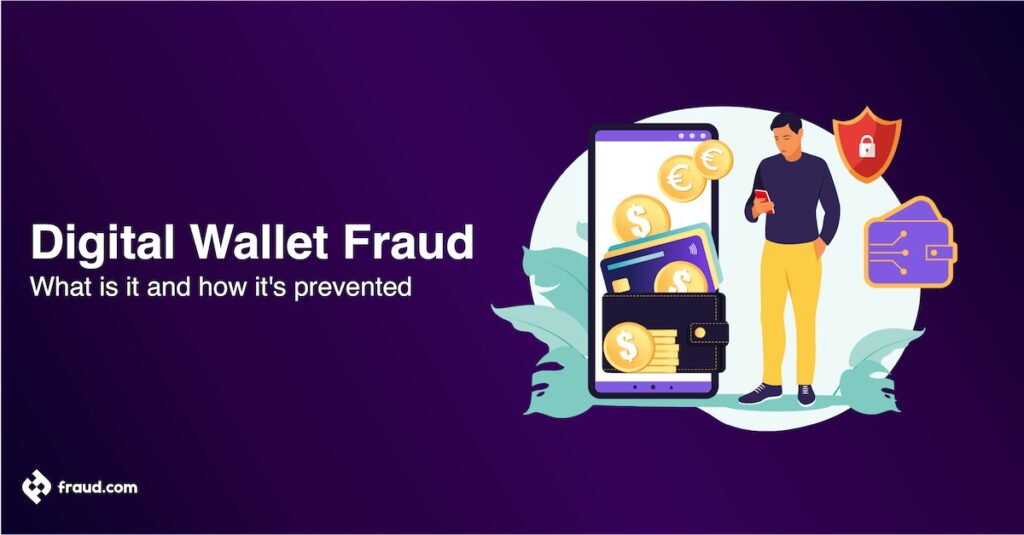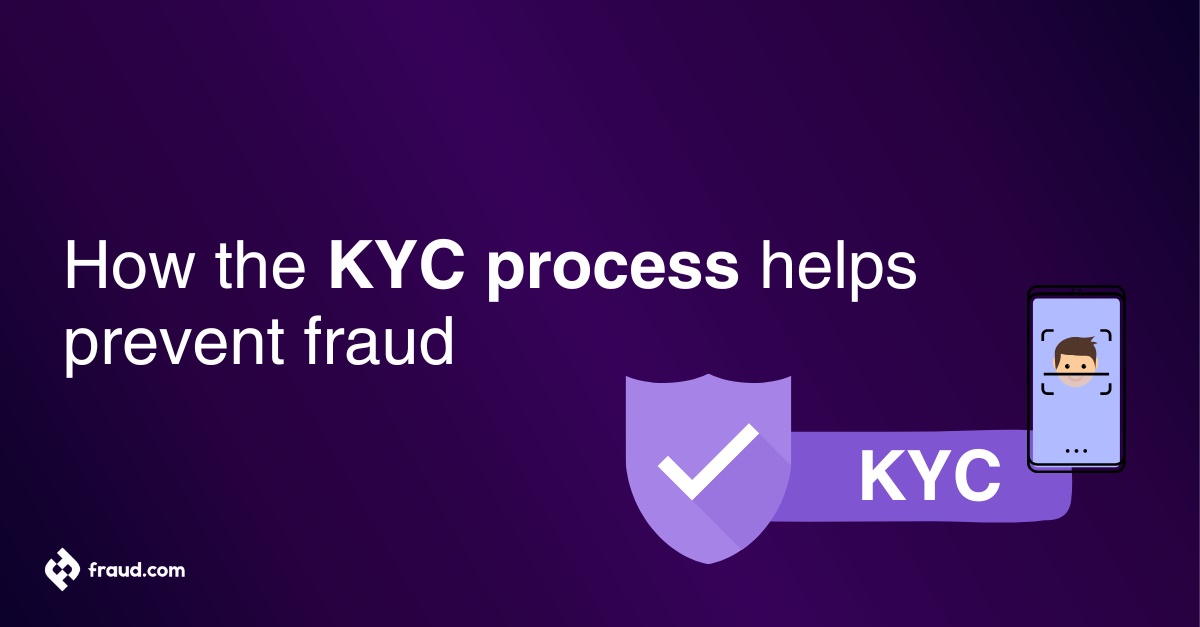Digital wallets have become increasingly popular as a convenient and secure way to make payments. However, along with their rise in popularity, digital wallet fraud has also become a growing issue. Individuals and organisations need to understand the risks involved and take steps to protect personal and financial information from being compromised.
In an age dominated by technological advancements, the integration of digital wallets into our daily lives has been transformative. Their ease of use, coupled with enhanced security features, has ushered in a new era of financial convenience. However, this surge in reliance on digital wallets has inevitably attracted the attention of fraudsters who seek to exploit vulnerabilities for their gain.
This makes it clear that we need to learn about digital wallet fraud, understand how scammers work, and be proactive about online security. In this article, we will explore digital wallet fraud more closely, looking at different types of scams and suggesting ways to stop them.
Table of Contents
ToggleWhat is a digital wallet
A digital wallet, also known as an e-wallet or mobile wallet, is an advanced and user-friendly app that acts as a digital storage space for various payment methods, facilitating seamless financial transactions via mobile devices. It securely stores payment information like credit and debit card details such as card number, bank account data, and loyalty cards within a designated app on smartphones or tablets, eliminating the need for physical cards or memorising financial data.
Practically, a digital wallet lets users link preferred payment methods to the app, creating a central hub for managing financial interactions. Users can add, edit, or remove payment sources, adapting their wallets to evolving preferences. These wallets seamlessly integrate with payment systems like Near-Field Communication (NFC) and QR code scanning, allowing effortless transactions at participating merchants.
Notable examples of digital wallets include Samsung Pay, Apple Pay, and Google Pay. Samsung Pay employs NFC and Magnetic Secure Transmission (MST) for wider payment terminal compatibility. Apple Pay is tightly integrated with Apple devices, while Google Pay caters to Android users, relying on NFC for contactless digital wallet payments.
How does a digital wallet work?
- Setup: To start, the user installs the wallet app on their mobile device. They download it from a reliable source, such as an official app store, and set up an account. They then link a payment method, like a credit or debit card, to the wallet.
- Store info: Once the wallet’s ready, users securely save payment data within the app. This includes card specifics, bank accounts, and even mobile wallets.
- Payment start: When it’s time to pay, the user opens the wallet app on their device. They pick the preferred payment method and provide required authentication, like a PIN, voice biometrics or facial recognition.
- Data transmission: After user authentication, the wallet app uses NFC or MST tech to send payment data from the mobile device to the payment terminal. NFC allows contactless payments by bringing the device near the terminal, while MST transmits data via magnetic fields.
- Transaction complete: With payment details sent to the terminal, the transaction gets processed. The payment terminal collaborates with relevant payment networks, like Visa or Mastercard, to verify and authorise the payment.
- Confirmation and receipt: Following authorisation, the user gets a confirmation notification on their device. They might opt for an electronic receipt through the wallet app or email.
Thanks to NFC/MST technology, digital wallets offer a secure and convenient payment method. Users can pay without needing a physical card or PIN, streamlining transactions for efficiency.
Risks of using a digital wallet
Using a digital wallet introduces several risks that manifest at both the organisational and individual levels, the need of more awareness and proactive measures to effectively counter potential threats has increased due to these risks, including the following:
Organisational risks:
- Payment raud: The digital landscape offers a breeding ground for payment fraud. Fraudsters exploit vulnerabilities, stealing personal information for unauthorised transactions. Payment fraud leads to financial losses, legal liabilities, and reputation damage for digital wallet providers. To counter evolving attack methods, comprehensive security protocols are essential.
- Machine learning threats: Embracing machine learning for fraud detection exposes providers to new threats. Malicious actors manipulate algorithms, evading detection in a cat-and-mouse game. Staying ahead demands investment in research, development, and real-time monitoring.
- Third-party vulnerabilities: Integrating third-party services enhances digital wallets but introduces vulnerabilities. Weak security in these services becomes gateways for unauthorized access or data breaches. Stringent vetting and ongoing monitoring of third-party partners are vital.
- Data breaches: User data accumulation makes digital wallets enticing targets. Data breaches compromise sensitive information, leading to legal, financial, and reputational consequences. Loss of customer trust and regulatory penalties follow.
Individual risks
- Phishing attacks: Fraudsters use phishing to obtain wallet credentials. Emails, messages, or fake sites convincingly mimic legitimate platforms, tricking users into sharing login details and payment information.
- Device theft or loss: Digital wallets linked to mobile devices pose risk. Lost or stolen devices or even stolen cards grant unauthorised wallet access. Without security measures, thieves could initiate transactions, causing financial loss.
- Biometric vulnerabilities: Biometric authentication isn’t immune to fraudsters. Manipulating fingerprint or facial recognition systems can grant unauthorised access. Users should store biometric data cautiously and update authentication settings regularly.
What is digital wallet fraud
Digital wallet fraud refers to any fraudulent activity that involves the unauthorised use of a person’s digital wallet to make unauthorised transactions. This can include the use of stolen credit card information or the creation of fake digital wallets to deceive individuals into providing their payment information.
Fraudsters continually devise new methods, such as phishing scams, malware attacks, and social engineering tactics, to exploit vulnerabilities in digital wallet systems and deceive users into revealing their sensitive data. As digital wallets become an integral part of modern financial transactions, understanding the evolving landscape of digital wallet fraud is crucial to safeguarding personal and financial information.
How does digital wallet fraud happen
- Phishing: Fraudsters may send emails or text messages posing as legitimate digital wallet providers, tricking users into providing their payment information.
- Malware: Fraudsters can infect mobile devices with malware that steals payment information directly from the digital wallet app.
- Fake apps & websites: Fraudsters create faux digital wallet apps or websites resembling legitimate ones. Users might unknowingly download these or provide payment data directly to the fraudsters via these platforms.
- Social engineering: Fraudsters trick users into sharing payment data using social engineering attacks. They impersonate support reps or trusted entities, gaining trust to access users’ wallets.
- Man-in-the-middle: Fraudsters intercept communication between users’ devices and payment terminals, capturing payment data for misuse, known as man-in-the-middle attacks.
- Wi-Fi snooping: Public Wi-Fi users face Wi-Fi snooping, intercepting data between wallets and terminals for fraudulent use.
- Data breaches: Data breaches expose payment data stored by providers due to system vulnerabilities or hacking.
- Device theft: Stolen devices grant unauthorised access to wallets, enabling fraudulent transactions.
How to prevent digital wallet fraud
In the ongoing battle against digital wallet fraud, both organisations and individuals need a diverse strategy to strengthen their defenses and ensure secure financial transactions:
Prevention for organisations:
- Advanced security measures: Employ robust security protocols such as state-of-the-art encryption and tokenisation techniques. These measures bolster the protection of payment information within digital wallet systems, rendering sensitive data virtually inaccessible to malicious actors.
- Routine system updates: Consistently update digital wallet apps and systems to proactively address any potential security vulnerabilities. Frequent updates ensure that the latest security patches are in place, making it significantly harder for fraudsters to exploit weaknesses.
- Education initiatives: Empower both employees and customers through comprehensive educational campaigns. Equip them with the knowledge needed to identify and thwart digital wallet fraud, including recognizing phishing attempts and adopting best practices for safe usage.
- Strong ID verification and authentication: Implement stringent ID verification and authentication procedures. This includes multi-factor authentication and biometric verification, ensuring that only authorised users can access and utilize the digital wallet.
- Fraud prevention and detection: Establish sophisticated fraud prevention and detection mechanisms. Implement anomaly detection algorithms and real-time monitoring to identify suspicious patterns of activity and proactively prevent potential fraud attempts.
Prevention for individuals:
- Source verification: Exercise prudence when downloading digital wallet apps. Only acquire apps from trustworthy sources, such as official app stores. Avoid sideloading apps from third-party platforms, as they might lack the stringent security checks of legitimate sources.
- Enhanced authentication: Use available security features within digital wallet apps. Enable PIN or facial recognition authentication to add an extra layer of protection. This ensures that only authorized individuals can access and use the digital wallet.
- Network consciousness: While the allure of public Wi-Fi is undeniable, exercising caution is paramount during digital wallet transactions. Public networks are fertile ground for hackers to intercept data. Whenever possible, utilize secure and private networks to mitigate potential data interception.
- Regular monitoring: Consistently monitor your bank accounts and credit card statements for any suspicious or unauthorised activities. Early detection of anomalous transactions empowers you to take swift action, mitigating potential damage caused by fraud.
As the digital landscape evolves, the battle against digital wallet fraud persists. Through a concerted effort between organisations and individuals, employing proactive security measures, staying informed, and adopting vigilant practices, the likelihood of falling victim to digital wallet fraud can be dramatically reduced. By embracing these preventive measures, we pave the way for a safer and more secure digital financial ecosystem.
How to prevent digital wallet fraud with aiReflex
To further enhance digital wallet fraud prevention, businesses can empower the use of aiReflex. aiReflex is an omnichannel, high-performance, white-box AI-based fraud prevention suite that helps financial institutions identify and prevent complex fraud scenarios while reducing false positives. By analysing transactions and behavioral patterns in real-time, aiReflex can help identify and prevent fraudulent transactions, ensuring a safer digital wallet experience.
Empower your business with aiReflex and protect yourself and your customers from digital wallet fraud. Contact us today to learn more about how aiReflex can help safeguard your financial transactions. Protect your organisation and customers from digital wallet fraud with aiReflex. Contact us today to learn more about how aiReflex can help identify and prevent fraudulent transactions in real-time.









